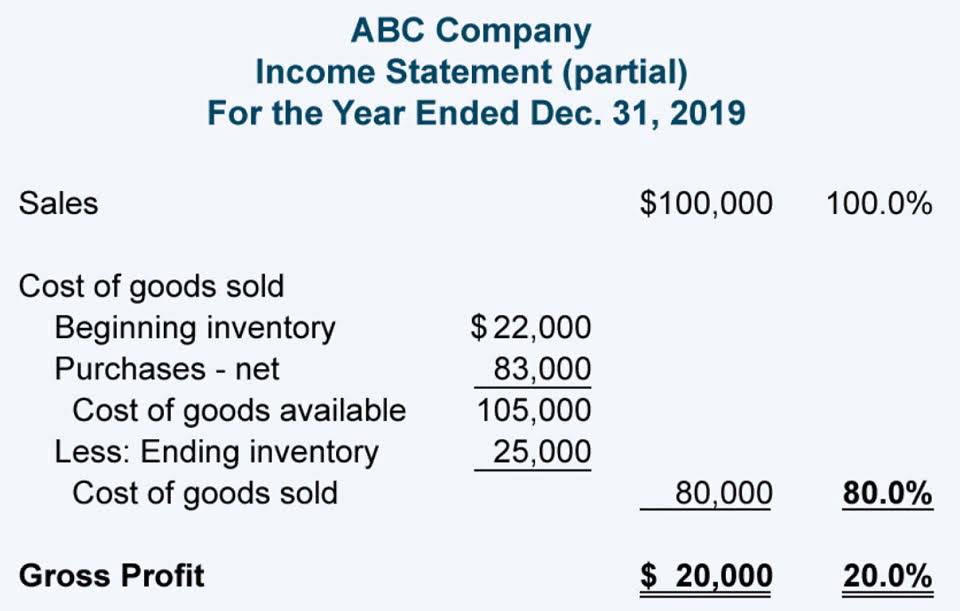
Gross sales can be an important tool, specifically for stores that sell retail items, but it is not the final word in a company’s revenue. Gross sales are not typically listed on an income statement or often listed as total revenue. Gross sales is a metric for the overall sales of a company, unadjusted for costs incurred in generating those sales, as well as things like discounts or returns from customers. The gross sales metric is calculated with a simple equation, where all sales invoices or related invoices are totaled. This calculation, QuickBooks notably, does not include the cost of goods sold (COGS), operating expenses, tax expenses or other charges—all of these instead deducted to calculate net sales. And if delivery charges can be calculated on each item of a shipment, charges to ship the exempt items would be exempt.
Learn More About Gross Sales
Companies must report shipping and freight as revenue when they bill a customer for these charges. For example, a manufacturer produces and ships equipment to customers. The manufacturer pays a discounted shipping rate while billing the full retail shipping rate to customers. The difference between the two numbers represents revenue for the manufacturer and needs to be included on the company’s income statement.
The Formula for Calculating Gross Sales

If you have any products that simply aren’t selling, you can move them to your website’s home page to attract more attention, highlight them at the cash wrap, or offer discounts to boost sales. You can track growth trends by looking at data like this, as well as understand the ebbs and flows of your industry to help with demand forecasting. Most industries experience periods of slow sales throughout the year. As we said, gross sales shows your total revenue during a certain period, whether the last month, quarter, or year. To determine whether sales are steadily increasing, we want to compare sales revenue for March 2022 with February 2022.

Gross Sales: What It Is, How To Calculate It, and Examples
- This is why gross sales are not typically listed on an income statement or listed as total revenue.
- Here’s how two small businesses might find this figure by looking at revenue from their sales transactions.
- This avoids the need to expense shipping charges for purchasing inventory items.
- From the list below, we can see that nomz offers a number of products.
- Sales allowances are price reductions given to customers for issues where a full refund isn’t necessary.
- Gross sales refer to the total sales amount without any deductions.
It starts with calculating the net sales over the last quarter, which was summer—the most popular time for this product. Discounts, sometimes known as markdowns, are price reductions made by the seller to incentivize sales. Sales allowances are price reductions given to customers for issues where a full refund isn’t necessary. Not everyone does gross sales include shipping is a born financial analyst, so don’t feel bad if you’re not entirely sure — you’re in good company. Just 45% of sales leaders have high confidence in the accuracy of their forecasting (including their projection of gross and net sales), according to Gartner.

- Gross sales can be misleading since the figure may overstate the amount of sales revenue, especially if you give a lot of refunds or discounts.
- Whenever you pay for shipping out to your customer, this is not included in COGS but is a monthly expense.
- These adjustments are made subsequently to arrive at net sales.
- If you have any products that simply aren’t selling, you can move them to your website’s home page to attract more attention, highlight them at the cash wrap, or offer discounts to boost sales.
- There are four important reasons to track gross sales, and here’s a brief roundup of those.
- Sales volume refers to the number of products sold in a specific period of time, while gross sales are the revenue the company gets by selling these products.
- Once you have all of your shipping costs in Gross Sales you would simply expense the shipping costs and every dollar that you spent and subsequently received will be accounted for.
The net sales calculation also helps you make better strategic decisions around pricing. By looking at how much total revenue you’re driving from sales, you’ll have a foundation on which to make decisions about the factors that can increase it. Net sales is an important metric because it shows how much sales revenue your business is bringing in. It gives you a big-picture overview of your net income from sales, which is fundamentally one of the biggest revenue drivers you’ll have. When you track net sales, you can see what deductions are impacting your bottom line — things like product promotions, discounts, and coupons. With an overall view of your net sales, you can find ways to reduce deductions that cut profits or add incentives to encourage more sales.
- When running a business, keeping an eye on revenue and sales is essential.
- Gross sales measures the total sales of a company, unadjusted for the costs related to generating those sales.
- Most industries experience periods of slow sales throughout the year.
- It’s something you need to know when measuring growth and the sustainability of your cash flow over the long term.